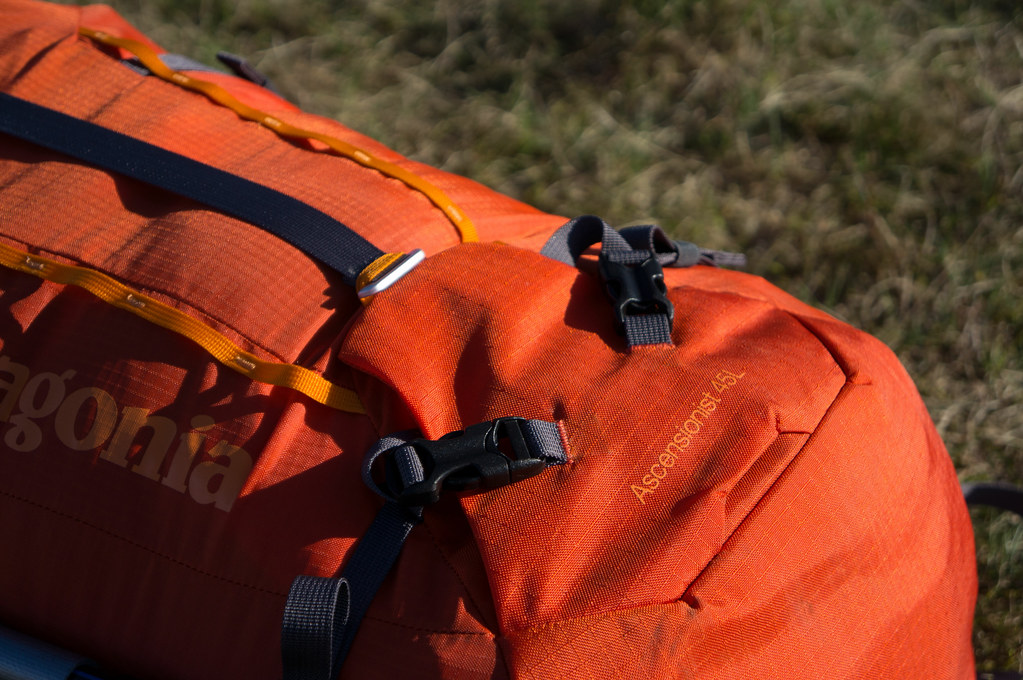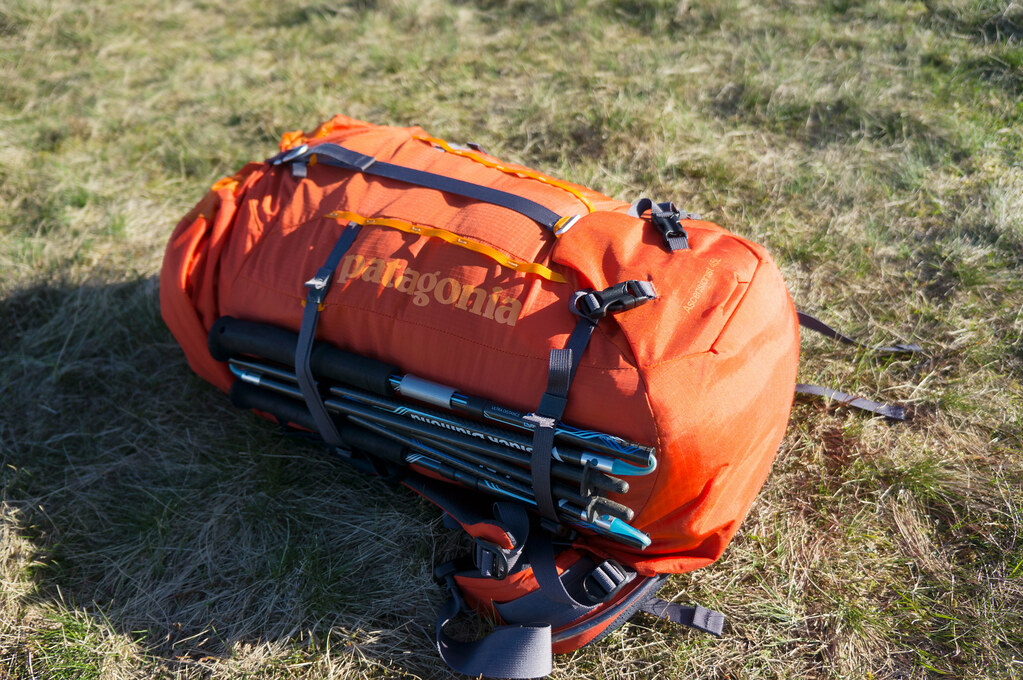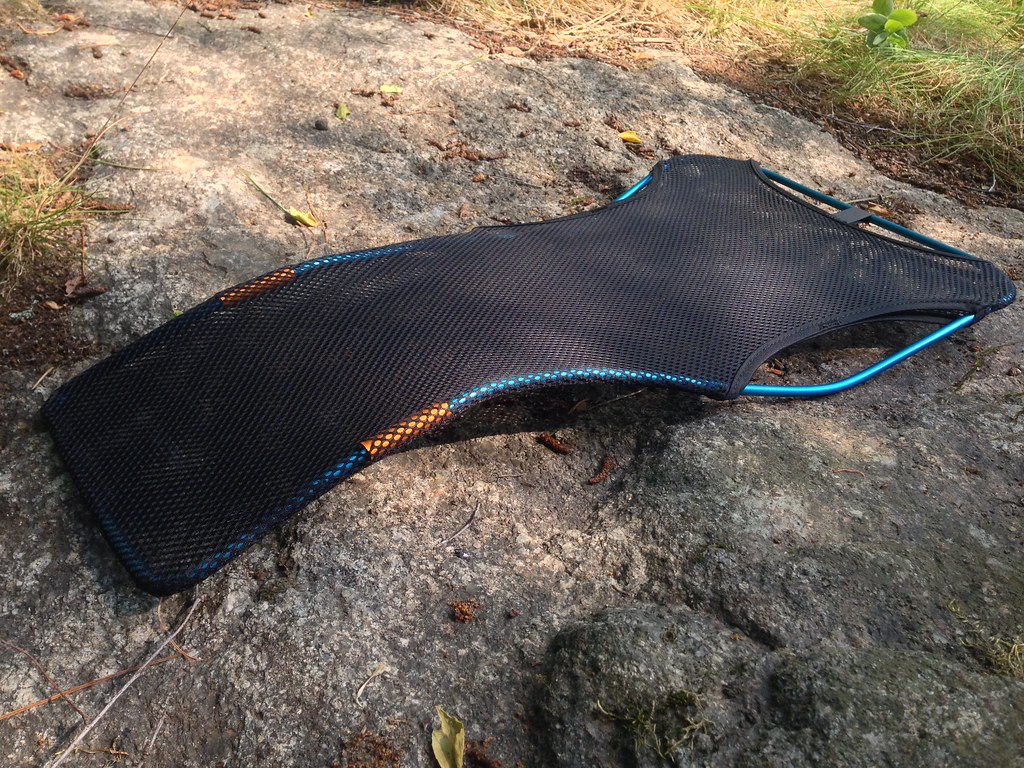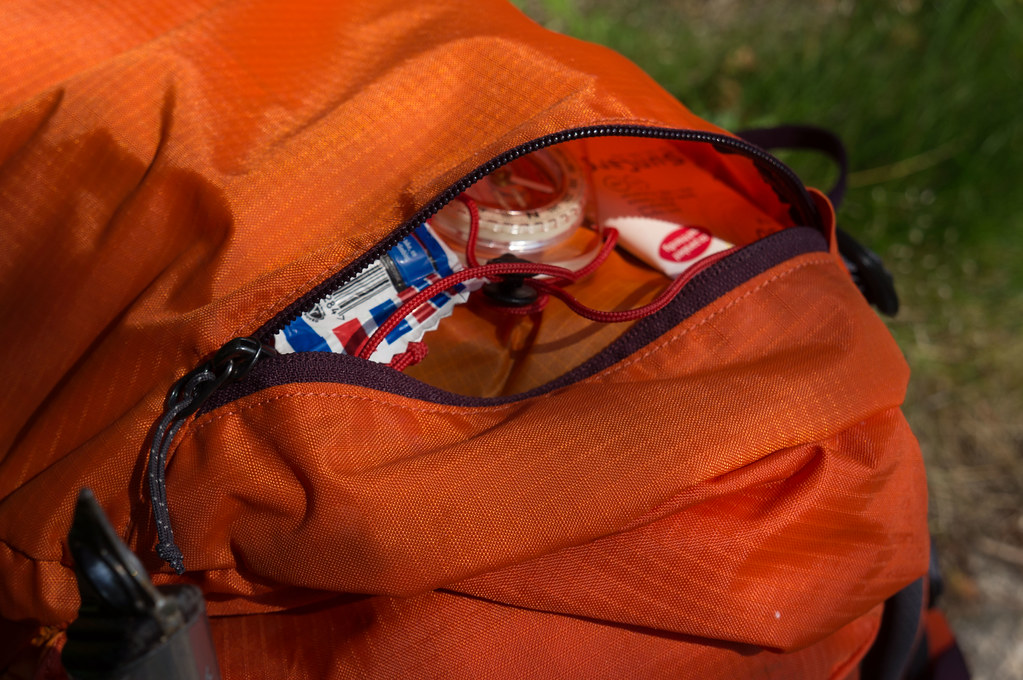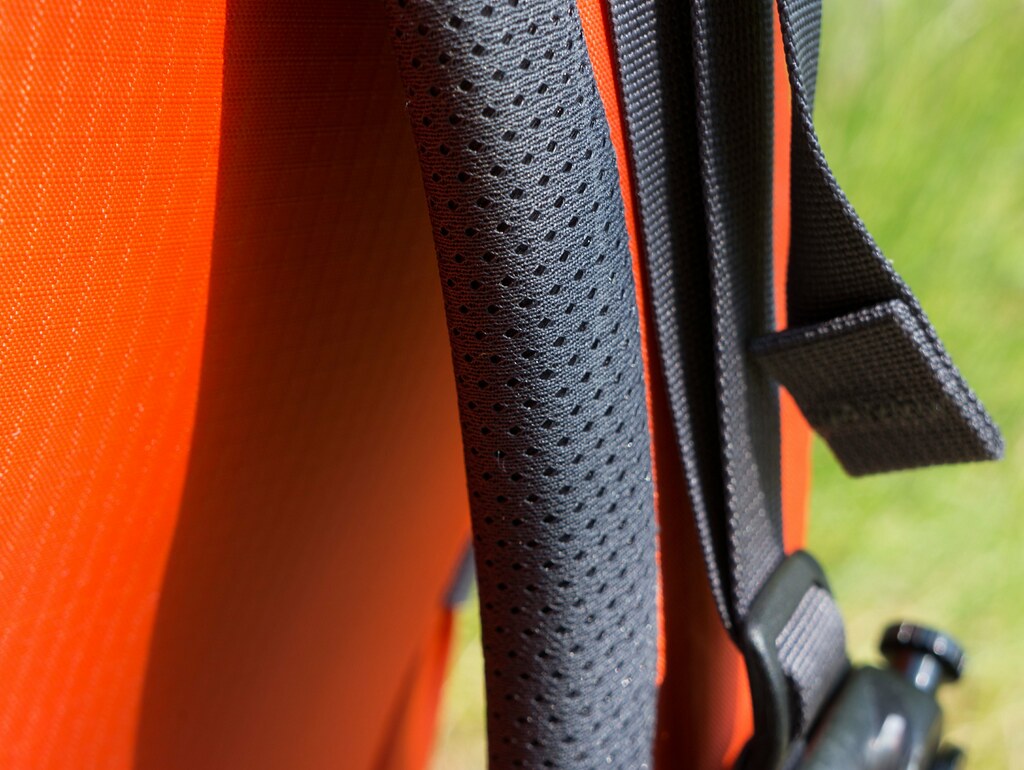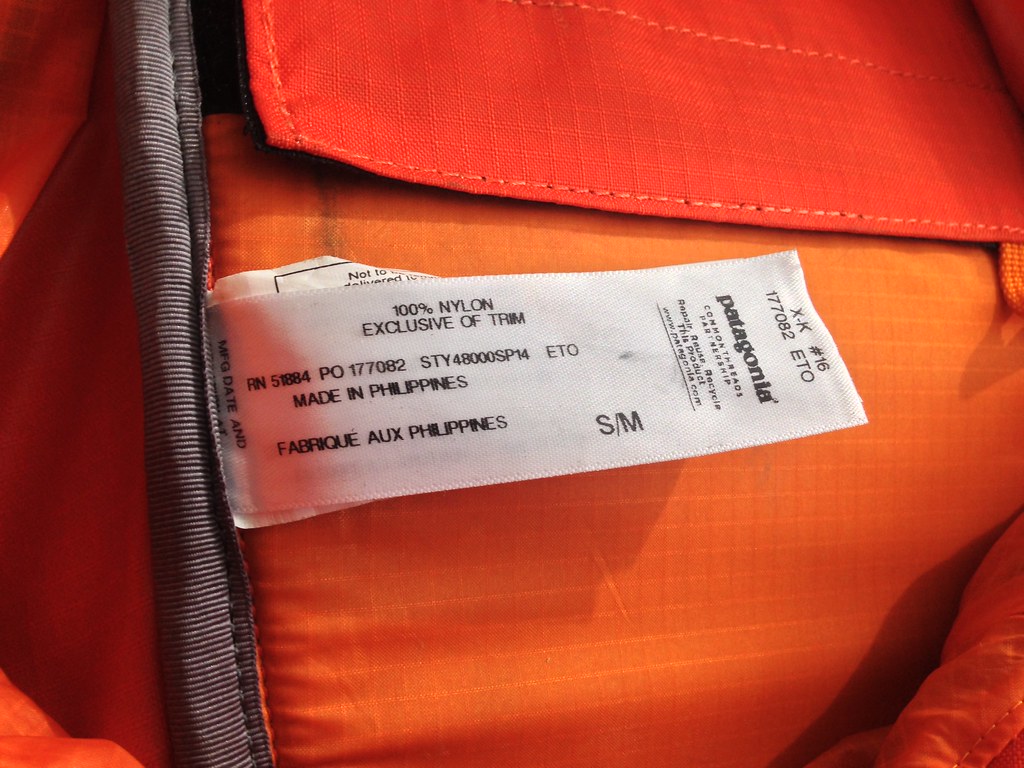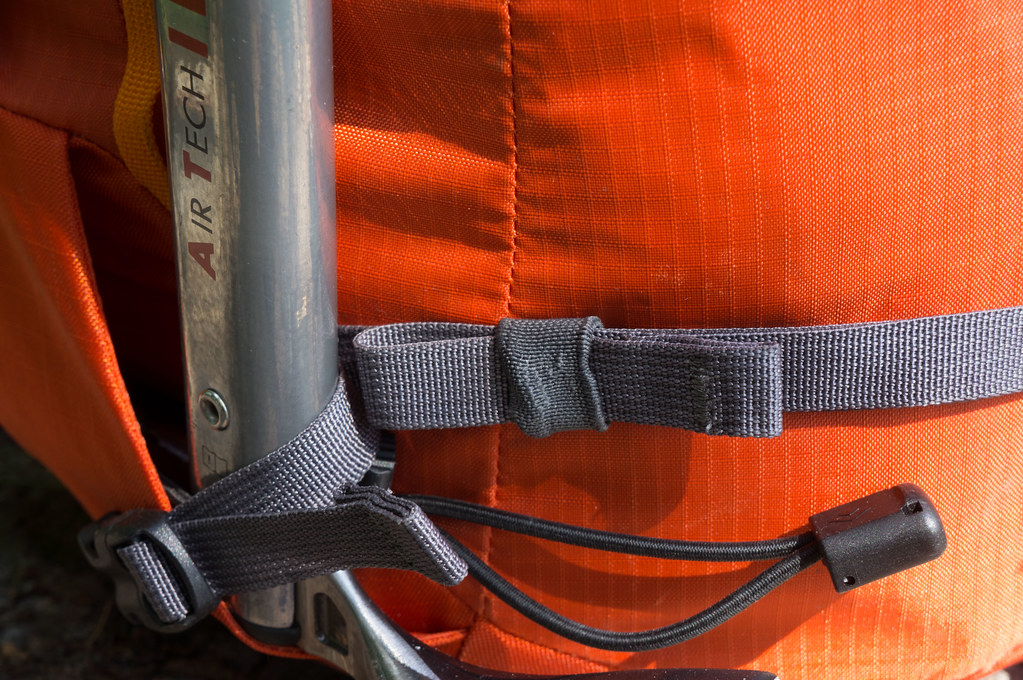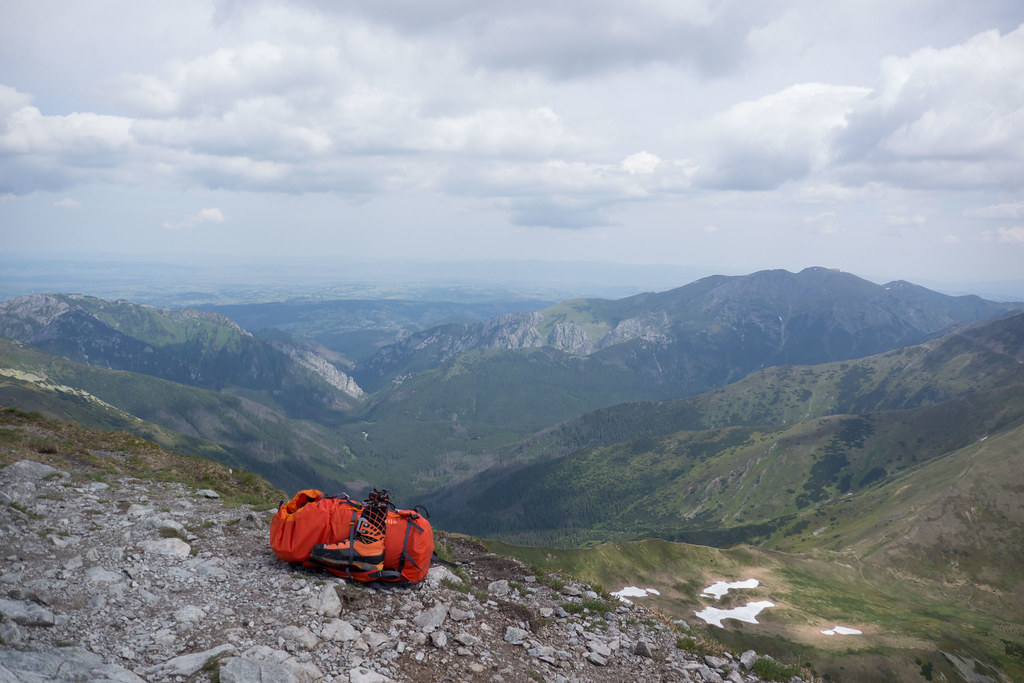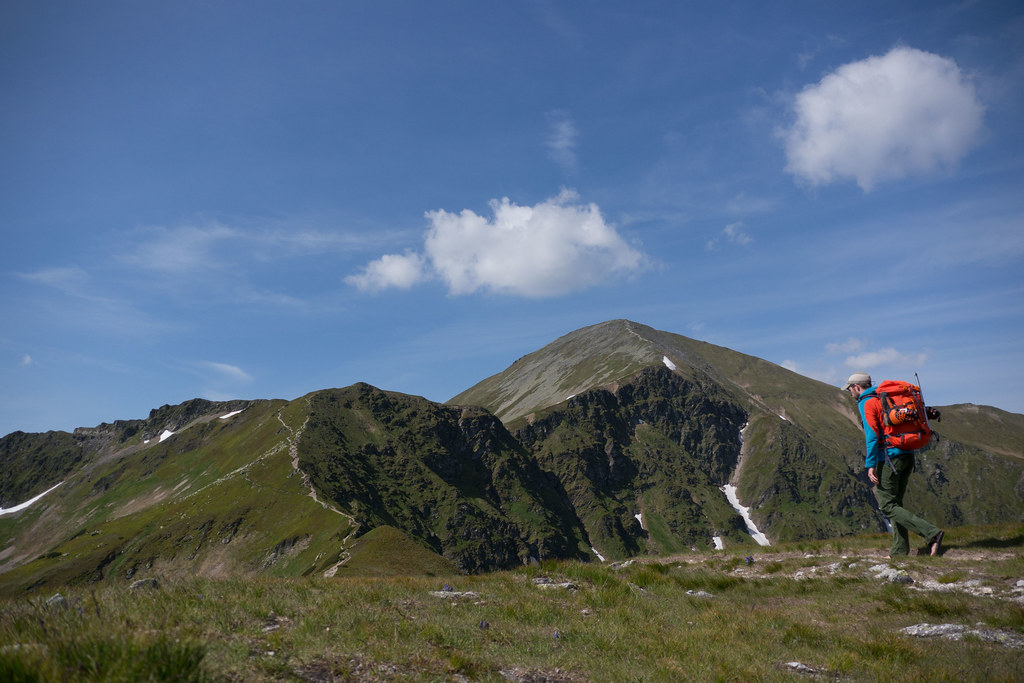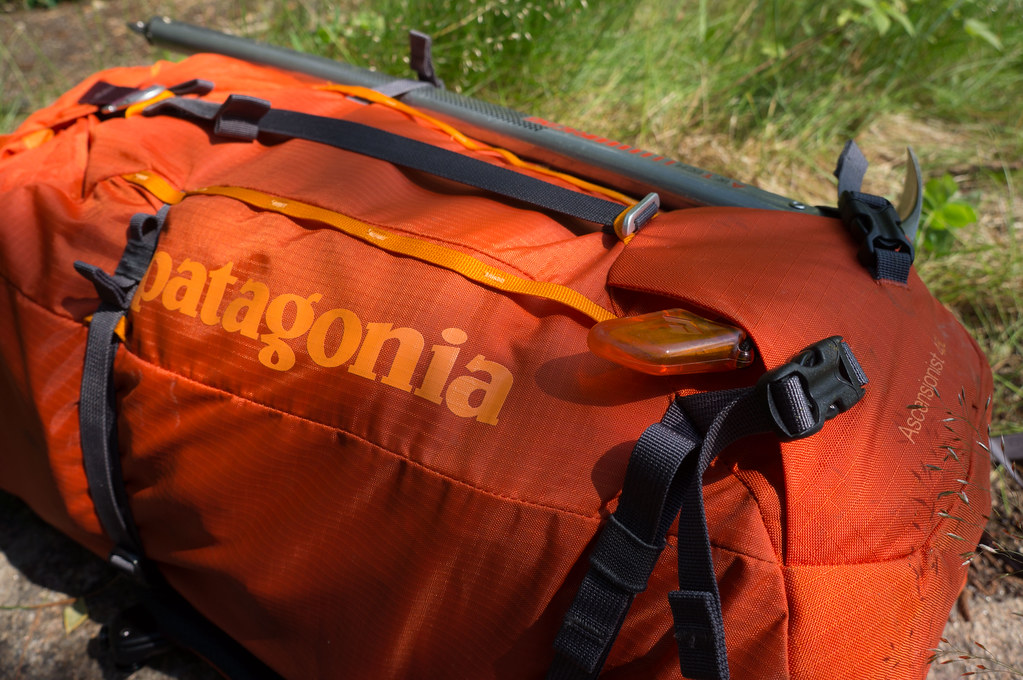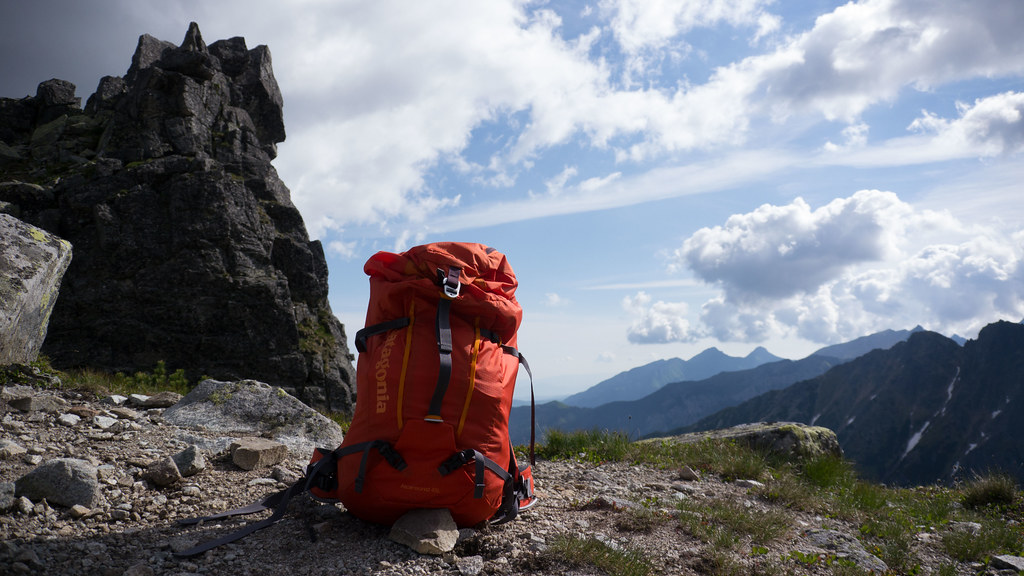What if Patagonia would go and build an alpine climbing pack that is minimalistic, comfortable, highly water-resistant and durable? Would it work also for backpacking? These and other questions I answer in this review.
Time
The Patagonia Ascensionist Pack 45L landed here in March 2014 and has been used various times at the local crag and in Chamonix, a week backpacking in the Lake District and a week climbing & hiking in the Polish Tatras.
Function
This is a streamlined alpine climbing backpack with more space than it’s litte brothers (there’s a 25 l and 35 l version available), made to carry more climbing gear for big ascents and/ or an overnight kit. It carries very well thanks to the Aluminium frame and easily can be used for week-long ultralight backpacking strips.
Features
This is what Patagonia says about their pack:
- Light and durable nylon ripstop with excellent tear and abrasion resistance
- The spindrift collar opens wide for easy packing; drawcord simultaneously cinches collar and closes lid for a secure seal; additional spindrift collar deploys to protect your gear when you have overstuffed your pack
- Aluminium stay frame with tensioned mesh center gives the pack structure and helps to support heavy loads and can be removed for Fast & Light adventures
- Padded hip belt can be removed to create a simple webbing hip belt
- Center sheath ice axe carry system accommodates a wide assortment of axes
- Daisy chains on front and side panels provide lashing options; compression straps on sides help manage different size loads; zippered pocket on lid provides easy access to small items
What they fail to mention is that this pack is the brain-child of Steve House, one of the world’s top alpinists. This pack won’t make you climb like him, but at least you can carry your gear like him =)
Technical Innovations
Something I haven’t seen before is the internal frame system that Patagonia uses in this pack. It’s an aluminium frame that’s covered by mesh and that’s super flexible - you can twist it 180° so it gives the pack great freedom of movement. The DWR on the material is also very good and kept my gear inside dry during hikes in sustained, heavy rain from all angles. Also the inside rain-cover is a nice way to not need an external one when you carry more gear.
Quality
After over two weeks of backpacking, climbing and scrambling with it it still shows no tears or signs of weakness. The DWR also still holds up very well, and all seams - despite some heavier loads and being fully packed - are still perfect like on day one. I think this pack will be with me for many hikes and climbs to come.
Weight
The Patagonia Ascensionist is available in two lengths and I have the S/ M length of the pack.
Stripped Pack: 847 Frame: 151 g Hipbelt: 140 g
TOTAL: 1138g
Sustainability & Recyclability
It’s Patagonia who made this pack so you know it has top-notch environmental credentials. ‘Nuff said!
Competing Products
There’s a wide variety of climbing backpacks, very good ones are the Crux AK-47 and the Black Diamond Speed packs. Cilogear also makes top-notch climbing packs, as does McHale.
In use
The closure of the pack is really nice. It is easy to open and close, even if it seems like an old-fashioned closure it is a smart system in my opinion. You can close it with one hand, opening with both. You pull the cord to close it, and then put the aluminium hook through the webbing loop. Even when fully packed it’s easy to open and close and most important - it stays closed. The front aluminium hook can be moved up if it’s really fully loaded.
The elastic loops to tie down straps are a very nice detail. This way webbing does not dangle around when the straps are pulled tight - if you’re anal-retentive about straps and stuff dangling around on your pack and like things to be orderly you will really like this small addition to all the straps.
Your ice axes or ice tools are connected to the pack via a small and durable ice axe pocket with a buckle at the front pocket and the shafts are held in place by the side compression straps. It’s a safe, good system for transport to the mountain and when you really won’t need it. For in between sections where you won’t need the tools you can store the ice axe He-Man style between your shoulder blade and strap.
The top pocket is surprisingly spacious and I can fit a large amount of stuff in there. Map, compass, sunscreen, lip balm, snacks, shades, extra camera lens - and still room to spare. It’s fairly weatherproof too, so in case you forgot your phone’s rain cover it’s safe in there (but even safer inside the pack!).
For a 45 l pack the Ascensionist is super spacious. Food and UL kit for six days + 2 l water were no problem for it, and there would have been even more space - that large opening + inside rainflap makes it a very large backpack. But also a full trad kit, helmet, harness, crampons and rope + UL sleeping gear and snacks fit in there with some room left. I really like the form of the pack with the narrow bottom and the wider top - it makes for easy packing. Food or climbing gear go in the bottom, followed by down garments and rain clothes, kitchen, quilt, bivy, shelter and helmet. Water bottles I store on the top of everything for easy access.
So is the Ascensionist better with the frame or without? That’s a difficult question to answer. In the Lake District I had the frame in the pack and found it worked superb. In the Polish Tatras I left the frame at home and also found it excellent. Subjectively I feel with the frame it carries slightly better and transfers weight more effectively to the hipbelt. The pack has what feels like a closed cell foam pad in the back which does a good job of keeping the shape of the pack when the frame is removed and also gives a bit of extra cushioning against your back.
Moving with it - climbing, hiking, scrambling - is wonderful. It rides high on the waist and does not limit movement at all. As it is a streamlined pack it you also have no stuff at the sides in your way, and low chances of the pack snagging something along the route or trail. As the pack is narrow and not very deep it’s close to the body so you can squeeze through tight passages, and your centre of gravity is close to where it’s supposed to be. The thickly cushioned shoulder straps are comfy also on long days, as is the hip belt. The gear loops on the hip belt are solid and a welcome addition to rack gear on long routes.
Oh, and you also can attach the Peak Designs Capture PRO wonderfully to the shoulder straps!
Could be better
When climbing with the frame in the pack I often would hit my head on it when looking up, which is not good. Removing the frame solves this, but it’s better with the frame inside for carrying heavier loads. If it’s possible I’d imagine making the internal frame shorter would solve this, as would a gap for the helmet when climbing/ looking up.
You can remove the padded hipbelt (and save 140 gram weight) but it’s too complicated - mainly because the wide webbing belt is sewn to the pack and can’t be removed. So you need to thread the webbing through the padding loops to take it off. I’d wish that everything could have been removed easily - I don’t see much sense in using the webbing as a hipbelt.
Water Management is not as straight forward as I’d like it to be. There’s no hydration system exit and no side pockets, so you need to take the pack off to drink. When climbing this is fine as you likely take the pack off at the belay and then can drink, but when hiking it’s not convenient to stop every 30 minutes to take the pack off to access your water bottle. You could attach your water bottle with a carabiner to the gear loop on the hipbelt, though I think that would be annoying if you have a bottle dangling in front of your legs.
Bottomline
At the moment the Patagonia Ascensionist Pack 45L is my favourite backpack. It carries very well, is large enough for week-long trips - be it climbing or backpacking - and can take a lot of abuse. It’s weatherproof, easy to pack, the big haul loop makes it easy to grab the pack & put on, and the cushioned shoulder straps and hip belt make it comfortable to carry also on 30 km days with 2000+ m of ascent. Most importantly it does not bother me when climbing or scrambling and gives me freedom of movement to go to those high places I enjoy so much! If you’re in the market for a large-volume alpine climbing backpack I can really recommend the Ascensionist 45L from Patagonia.
Oh, in orange it also looks great - Hup Holland Hup!
Where to buy it
Get your Ascensionist pack at Unterwegs.biz if you are in Europe, from CampSaver if you’re in the USA or directly from Patagonia everywhere else.

